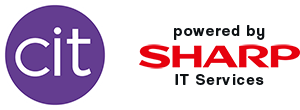The Internet
Introduction to the Internet
The Internet is a system of interconnected computer networks that link devices globally using the World Wide Web. It uses internet protocol suites such as TCP/IP (Transmission Control Protocol/Internet Protocol) to provide end-to-end data communication by specifying how data should be packetised, addressed, routed, transmitted and received. The internet consists of local and global networks for public, private, business, academic, and government use, all linked by a wide array of wireless, electronic and optical networking technology.
Use of the internet has grown to over one third of the world population, making it one of the main tools that people use to communicate today.
History of the Internet
The internet’s foundations can be dated back to the 1960’s, when the United States Government contracted research with the end goal of building robust communication tools that were fault-tolerant via computer networks. As a result, early concepts of packet networking, a type of electrical data transportation, started to appear in computer science laboratories in the USA, UK, and France. Funding from the Advanced Research Projects Agency (ARPA) division of the US Department of Defence led to the creation of the first network to use the protocol suite TCP/IP – the Advanced Research Projects Agency Network, or, ARPANET.
After the benefits of ARPANET came to fruition, and its many applications outside of the military were realised, funding for private networks such as the National Science Foundation Network created a global effort in the development of networking technologies.
The 1990’s saw the beginning of the modern internet, which aimed to link businesses with commercial networks. Businesses realised the need to implement networks such as the internet because of the generational growth in the use of personal, institutional and mobile computer devices that were imbedded in the network. Since Sir Tim-Berners Lee invented the World Wide Web in 1990, the internet has rapidly grown in both the developed and developing world, where it is largely regarded as the most significant human invention of the last century. Almost all media channels are being reshaped by the internet, including radio, telephony, television, paper mail and newspapers, with the latter needing to move online via blogs, web feeds, internet forums and social networks.
Web Browsers
Any software application designed for retrieving and presenting information resources on the World Wide Web (the internet) is called a web browser. Although initially intended for use on the World Wide Web, browsers can now be used to access information stored on web servers in private networks. The most popular web browsers today are Google Chrome, Mozilla Firefox, Internet Explorer, Microsoft Edge, and Opera.
Google Chrome
Chrome is a web browser developed and designed by American multinational technology giant Google. Initially released in September 2008 for the Microsoft Windows operating system, due to popularity Chrome was later ported for use on Linux, MacOS, iOS, and Android operating systems.
Google Chrome is the most widely used web browser globally, boasting 62% of worldwide usage share as of February 2017. The popularity of Chrome has led to Google capitalising on the brand name, following with products such as Chromecast, Chromebook, Chromebox, and Chromebase.
Mozilla Firefox
The Mozilla Firefox browser was released in September 2002 as a Mozilla Corporation development, a subsidiary of the Mozilla Foundation, an American non-profit organisation. Firefox gained 60 million downloads in nine months when it was released to the public in November 2004, making it the main challenger to Microsoft’s then-dominant Internet Explorer 6.
Firefox reached its peak market share in 2009 with version 3.5, which gained 32% of global web browser usage. It was the most popular web browser as it neared the decade, but rapidly declined when Google released Chrome.
Internet Explorer
Microsoft’s first web browser was a series of graphical internet browsers named Internet Explorer, which reached an astonishing 95% usage peak between 2002 and 2003. The growing popularity of rival operating systems such as MacOS, Linux, iOS, and Android, and the release of competing web browsers Chrome and Firefox have now led to the discontinuation of Internet Explorer. The software was increasingly scrutinised for its privacy and security vulnerabilities, driving Microsoft to release an entirely new web browser – Microsoft Edge.
Microsoft Edge
Microsoft Edge was released in July 2015 as the successor of Internet Explorer, and is now the default browser for all Microsoft devices.
Safari
Created by American multinational technology corporation Apple, Safari was announced by the late, then CEO of Apple Steve Jobs in January 2003 at MacWorld in San Francisco. Several test releases of the browser preceded the official release of version 1.0, which became the default browser for all Apple devices.
Opera
Opera is a type of web browsing software created by Norwegian company Opera Software for use on Windows, MacOS, and Linux operating systems. The browser was released as version 2.0 to the public in 1996 aiming to capitalise on the emerging consumer market for internet connected handheld devices.
earch Engines
A web search engine is a type of software that provides users with an easy way of searching for and accessing information across the internet. A user will type what they wish to find out about (their search criteria) into the search bar and results are generally presented in a vertical line with the most relevant results (based on entered keywords) towards the top. Search results can come in the form of web pages, images, video, and other types of files such as Portable Document Formats (PDFs).
The most common search engines used today are Google, Bing, Yahoo! And Baidu.
Founded in 1998 by Larry Page and Sergey Brin, Google specialises in Internet-centric services and products, and developed the Google search engine in September 1997. Available in 123 different global languages, Google has become the most popular internet search engine over the past 19 years with an 80.52% user market share, handling an extraordinary three billion searches every day. Google have monopolised the search engine market so much that the verb ‘Google it’ has become the go-to-phrase for someone looking to search for information on the internet.
Bing
Bing is a web search engine developed and operated by Microsoft, and has its origins within Microsoft’s preceding web, video, image and map search engines: MSN Search, Live Search, and Windows Live Search. In the United States, Bing became the second largest search engine in 2015 with 20.9% of the total search share, and in July 2009 Microsoft and Yahoo! announced a pioneering deal in which Bing would power Yahoo! Search.
Yahoo!
Yahoo! Search is a web search engine launched in March 1995 and entirely owned by American multinational technology company Yahoo. Yahoo! Search is the third largest search engine in the US at 12.8% of total query volume. Once the most popular website in the United States, Yahoo! Search started to decline in the late 2000s.
In 2017, Verizon Communications obtained Yahoo’s internet business for $4.48 billion, announcing that it would be combined with one of its other subsidiaries, AOL, to form Oath Inc.
Baidu
Baidu is a Chinese search engine created by web services company Baidu Inc. Predominantly used in Asia to search for websites, images and audio files, it is estimated that 56.6% of the 4 billion search queries in China are done on Baidu annually.
Baidu is similar in functionality to Wikipedia; however, Baidu is heavily censored of pro-democracy materials to coincide with the current Chinese governmental regime.
Content Management Systems
A content management system (CMS) is an application used on computers to support the creation and curation of content, digitally. Whilst CMS software can vary widely from provider to provider, most will include the same basic features, such as: web-based publishing, version control, history editing, format management, search, retrieval, and indexing.
A web content version of a CMS system is intended to support the creation and alteration of web page content, often consisting of: photograph, video, and audio functions, maps, programme code, text, and embedded graphics. Most individuals or businesses use a CMS system to reduce the need to pay for website editing support, or the time taken to alter web content.
The most popular CMS software include WordPress, Joomla, SilverStripe, Textpattern, Drupal, and Magento.
WordPress
WordPress is the most popular CMS systems today, boasting a 27.5% share of the top 10 million websites as of February 2017, and supports more than 60 million websites worldwide. It was released in 2003 by founders Mike Little and Matt Mullenweg and works by using the PHP scripting language, specifically created for web development.
Because of its quick and simple installation, WordPress is hugely popular amongst bloggers.
Joomla
Joomla is a content management system that uses the PHP scriptwriting language, it is often regarded as the second largest CMS software after WordPress, which has been downloaded a total of 81 million times. Joomla was released in September 2005 as a rebrand of Mambo, a now unused CMS.
SilverStripe
SilverStripe is an open-source CMS software which was designed for setting up and maintaining web applications and websites. The software was developed by SilverStripe ltd, a web development organisation founded in 2000, and made popular largely because of its out-of-the-box template, and easy embedding tools that allow users to easily integrate media from other channels, such as YouTube.
Textpattern
Originally developed in 2001 by Dean Allen, Textpattern is an open-source CMS system that utilises the PNP scripting language. It is specifically aimed at designers and bloggers as every visual aspect of Textpattern can be manipulated from the administration interface.
Drupal
Drupal was originally created by Dries Buytaert as a message board, however it became an open-source software in 2001. Drupal gives a back end framework to at least 2.3% of all websites worldwide, ranging from corporate blogs, personal blogs, business news pages, political and government sites.
Magento
Magento was first published in 2008 by the then named Varien Inc, as an e-commerce CMS system written in the PHP scripting format. The version of Magento used by 28% of websites worldwide today is Magento 2.0, which was released in 2015 after e-commerce giant eBay fully acquired the company Magento in 2011.
The Impact of the Internet on everyday life
The impact of the internet is wide reaching and all encompassing. It has created completely new avenues for communication, social interaction and social relations. The massive rise in use of social networks such as Facebook, Twitter, and Instagram allow people to be connected at all times and reveal details about their lives whenever and to whoever they want. An increasing number of people have taken this further by utilising the internet to form global friendships and relationships, by taking part in modern conveniences such as online dating.
Politically
Particularly in recent years, the internet has seen relevance as a political tool. Election campaigns generate millions in donations to fund their efforts by using social media and email. Social movements use the internet to raise awareness, inspire the masses and launch activism. A notable example of a grassroots movement that used the internet, more specifically social media, to gain traction was the Arab Spring; a series of protests and revolutions against corrupt governments in North Africa and the Middle East.
Standing governments are also utilising the internet to further their agendas. Countries like North Korea filter all internet content to coincide with the regime of Kim Jong-un.
Economically
E-commerce has grown ten-fold in recent years due its unique convenience. Highly accessible online activities such as shopping, virtual banking, online advertising, e-marketing, and online payment have changed the way that people carry out day-to-day tasks. The internet allows people to fully research what they want to purchase, before setting foot in a shop, which has completely changed the role of the modern salesman. They are now there as an advisory tool, not to sell. Online merchants can also utilise the internet to gather the purchase interests of customers for the purpose of targeted advertising.
It is argued by some that the move of high street shopping to the internet is responsible for the decline of small businesses. This is viewed as problematic not only because it diminishes variety and increases income inequality, but it favours more established/online retailers, which can create a monopoly in retail.
Socially
It is often reported in the media today that the use of the internet will lead to an isolated, alienated, and withdrawn society, but the implications of internet use are quite the opposite. It increases socialness, civic engagement and the intensity of important relationships with family and friends. It has led to a digital revolution in interaction, people can now interact instantly and communicate what they want via new mediums, such as blogs, social media, and forums.
Perhaps the biggest socio-cultural change is in who humans seek to form relationships with. In a social sense, relationships are being restructured to reflect personal interests and values. Community is now formed through the quest of individuals to find like-minded people, as opposed to people living in their immediate area.
The Impact of the Internet on business
The internet affects every step of the trading and business process; purchasing, supply chain, marketing, sales, customer service and business relationships have all been enhanced by moving online. It also allows businesses to create better customer-vendor relationships by providing a more tailored and improved service or product. By using avenues such as social media and websites, a company can find out what customers are saying, and make changes accordingly.
Communication
The communication channels that have arrived with the internet have forever changed how businesses interact with both customers and employees, and how employees interact with each other. As previously mentioned, social media gives an enterprise the ability to communicate in a way that was previously unavailable – personally. By giving people an open way of complaining, commenting, or discussing services or products, a business can improve their offering by examining the feedback, all whilst humanising the business with a face or voice. Additionally, email creates opportunities for direct customer communication, it also provides employees with an easy and instant form of communication from anywhere in the world, without the disruption that comes with a phone call.
Telecommuting
It is no longer a necessity for all employees to be office based. Businesses are increasingly offering roles that allow people to work from home. There are two main reasons for this, firstly, it massively decreases overhead costs for a business by removing the need to invest in large areas of office space and daily utilities. Secondly, many companies observe that employees working from home are more productive. By staying away from the office, staff do not get distracted by calls or other employees and can increase their own productivity. Businesses are gaining more confidence in these types of roles because internet tools now allow them to accurately measure staff output.
Marketing
Marketing teams must constantly be aware and adapt to market trends, changes, and the overall needs of the customer. The internet now makes this easier by providing new ways of monitoring user activity, such as Google Analytics, AdWords, and softwares like Moz. An increase in internet shopping also means that marketing teams are no longer in competition with just local companies, but with businesses all around the world, so standing out is more important than ever.
Traditional print marketing channels such as magazines and newspapers are becoming obsolete with the advent of the internet, which is making online blogs, news platforms, and websites a more cost-effective approach. Online content is so widely recognised as a crucial means of marketing that companies are optimising their content for users to find it more easily by ranking higher on a search engine, this is called Search Engine Optimisation (SEO).
The internet also impacts marketing in other ways:
- Paid Search (PPC) – PPC or Pay-Per-Click is where a company places an advertisement in a very visible location of a website or search engine, and pays the hosting entity per click of that advertisement
- Remarketing – Remarketing is the term given to a business’ use of technology in search engines that show advertisements to potential customers who have recently visited their website



